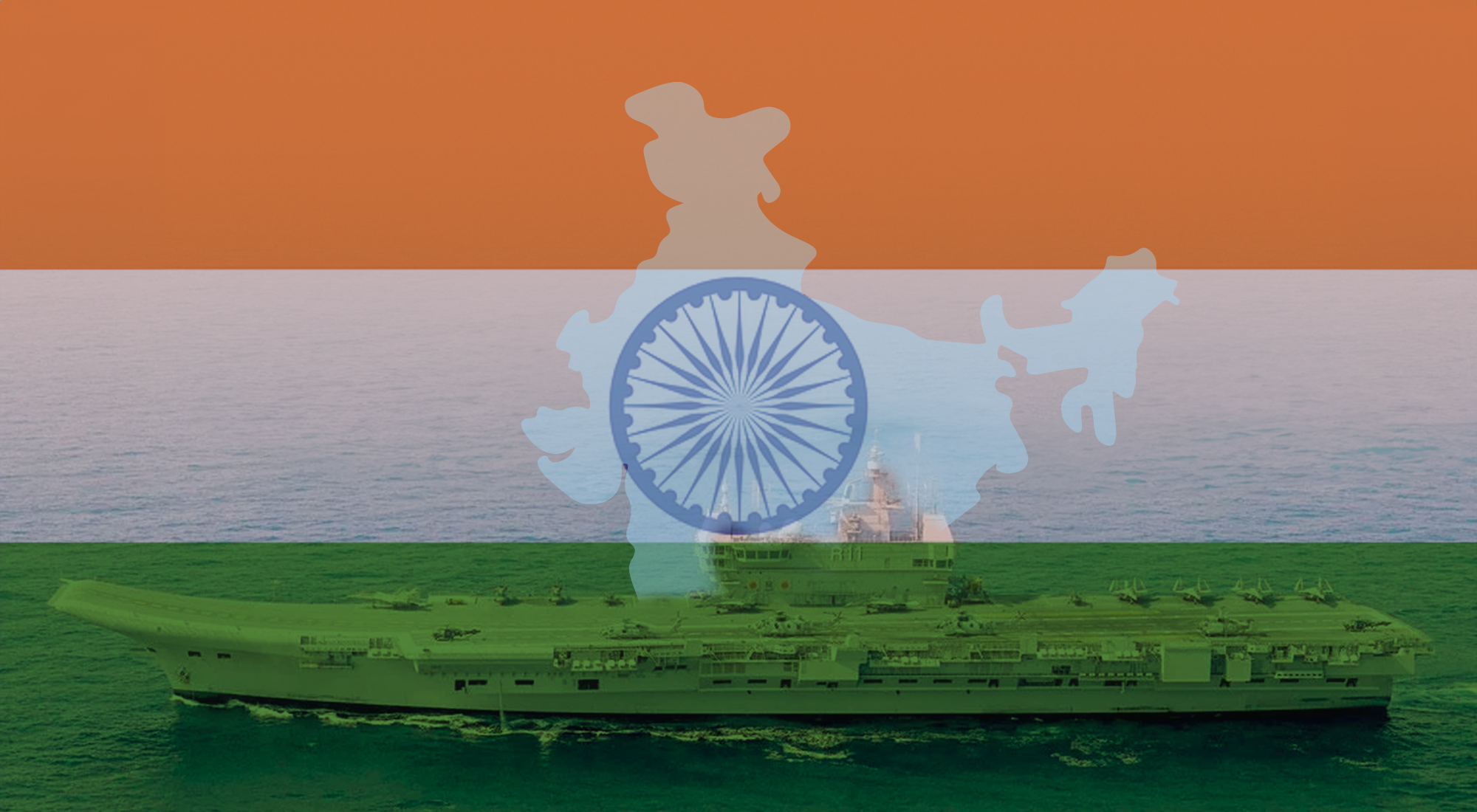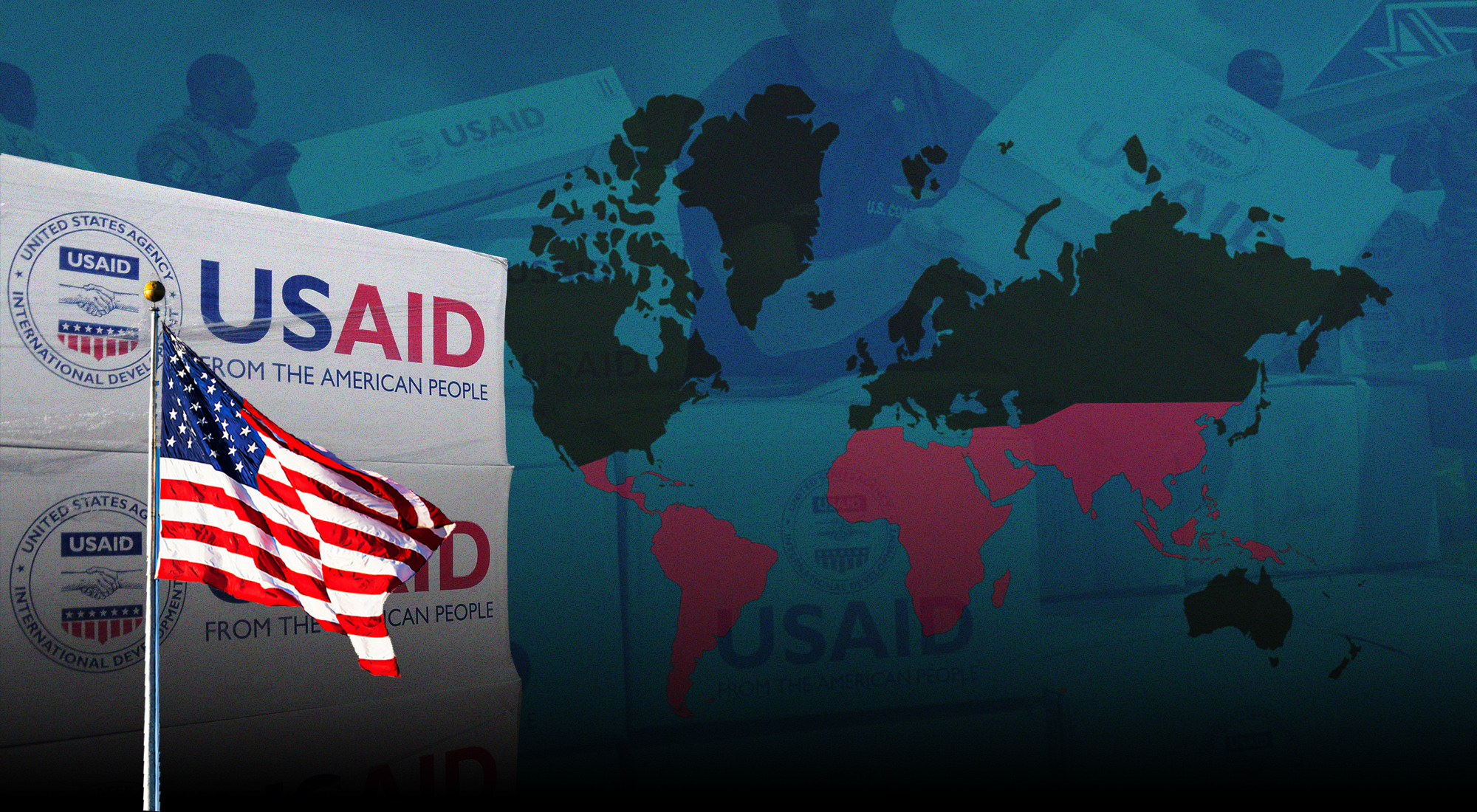Background
In early June this year, the Indian Navy undertook a large-scale naval deployment in the Arabian Sea with two aircraft carrier battle groups (CBGs). The naval maneuvers involved the navy’s two latest aircraft carriers: INS Vikramaditya and INS Vikrant, an impressive array of ships and submarines, and 35 aircraft, including the Russian MiG-29 carrier-based fighters and American helicopters MH-90R. Commenting on this deployment, the Indian Navy tweeted: “The seamless operational integration of the two aircraft carriers… as well as fleet ships and submarines is a powerful testament to the pivotal role of sea based air power & India’s role as the preferred security partner in the Indian Ocean and beyond.”[1]
Over the last decade, the Indian Navy has grown significantly, evolving to meet the emerging threats and challenges of the Indian Ocean region. Most of these threats are common to the various regional states and include non-traditional threats of an urgent nature such as piracy, illegal fishing, terrorism and smuggling, at one end of the spectrum, to certain long-term strategic challenges posed by climate change, natural disasters, and maritime disputes. Many of the extant maritime threats such as piracy off Somalia or responding to regional natural disasters, are beyond the capability of a single state and require multilateral approval. For instance, the recrudescence of piracy/armed attacks on shipping in the Gulf of Aden by Somali pirates in the early years of the twenty-first century, required a global response involving most of the G20 navies to bring it under control. Similarly, drug smuggling in the Arabian Sea is a new threat that will increasingly require greater attention by the Middle East navies and the Indian Navy.
Currently, the Indian Navy has a fleet strength of about 150 ships that include two carriers and two strategic nuclear submarines, besides numerous other platforms, and is on track to be a 200-ship navy by 2027. With an expanding operational footprint in the wider Indian Ocean region, the Indian Navy aspires to be the regional net security provider as envisioned by Indian Prime Minister Narendra Modi to provide ‘Security and Growth for All in the Region’ or SAGAR (an acronym that means the Ocean in Hindi).[2] Thus, as the regional security provider, the Indian Navy seeks to provide the necessary leadership and resources to augment the capacity of the relatively smaller regional navies in meeting the emerging maritime threats and challenges of the twenty-first century. In this context, this article looks into the significance of the deployment of the Indian aircraft carriers in the Arabian Sea and what this development means for the Indian Ocean region in general and the Middle East region in particular.
Elite club of carrier operating navies
The capability to operate two aircraft carriers or flat tops puts India in an elite group of a select few world navies that include the United States, the UK and China. In fact, even the UK and China have yet to demonstrate full scale fleet operations involving their two new carriers, i.e., HMS Queen Elizabeth and HMS Prince of Wales of the Royal Navy,[3] and the Liaoning and Shandong of the Chinese navy. The Indian Navy has a long record of operating aircraft carriers since the early 1960s, when it acquired its first flat top from the British Royal Navy — HMS Hercules, which was commissioned into the Indian Navy as INS Vikrant. Subsequently, in 1987 the Indian Navy bought its second aircraft carrier from the Royal Navy — HMS Hermes, which entered into service as INS Viraat. The Viraat was eventually decommissioned in 2017 after nearly six decades in service, including the time spent in the Royal Navy from 1959 when it was first commissioned. This is another feather in the cap for the Navy as it stands outs as a sound testimony of not just naval professionalism but also the ship-repair and maintenance capability in India.
While the earlier Indian carriers, i.e., Vikrant and Viraat, were regarded as light aircraft carriers with a tonnage below 30,000 tons, the latest carriers, Vikramaditya (a former Soviet-origin Kiev-class carrier named Admiral Gorshkov) and the new Vikrant that was designed and constructed at the Kochi Shipyard in India, are both medium-sized carriers with a displacement of over 44,000 tons.[4] Importantly, the Indian Navy has had operated two carriers in the past, between 1987 and 1997, and between 2013 and 2017, which puts it several decades ahead of the Chinese Navy which has only recently inducted its first two aircraft carriers mentioned above. Importantly, a third Chinese carrier — the Fujian — has been launched but not yet commissioned.[5] Significantly, the Indian Navy too has plans to acquire a third carrier in the future, subject to budgetary constraints.
Aircraft carriers are expensive but highly versatile and sophisticated platforms that are actively operated by only nine navies globally. Less than two dozen aircraft carriers are known to be in service (excluding large amphibious ships that are capable of carrying multiple helicopters), with the United States alone accounting for the largest inventory of 11 carriers. Critics of the aircraft carrier have labeled it an expensive relic of the twentieth century, given the advent of improved surveillance technologies and long-range missiles in the twenty-first century that have made the carrier more vulnerable than before. But, as the most conspicuous symbol of a country’s sea power, the carrier continues to remain the favorite for all leading world navies. The aircraft carrier is akin to a ‘floating airfield’ in the oceans that provides a launch platform for a wide array of aircraft, helicopters and even UAVs. As highlighted by the Indian Navy, “these mobile bases can be positioned anywhere, allowing for increased mission flexibility, timely response to emerging threats and sustained air operations to safeguard our national interests across the globe.”[6]
Although, as a strategic platform, the classical military role of the aircraft carrier is to exercise ‘sea control’, its versatility allows it to be used in a variety of roles in peacetime, such as humanitarian assistance and disaster relief in case of major disasters, such as the 2011 Japan earthquake and tsunami that involved the deployment of the U.S. aircraft carrier USS Ronald Reagan[7] along with other units engaged in the U.S. Navy-led Operation Tomadachi. Other such roles for the aircraft carrier could include surveillance over large areas and even mass evacuations when required. In the Indian Ocean, which is known to be vulnerable to a wide range of maritime threats such as piracy, illegal fishing, drug smuggling, trafficking, maritime terrorism, and natural disasters, India has emerged as the principal regional naval power in the Indian Ocean region with a proven capability to render assistance during crisis situations. Most of the other relatively smaller or medium-sized regional navies, such as those belonging to the Maldives, the Seychelles, Madagascar and Mauritius, lack adequate maritime capacity to deal with the emerging maritime threats.
India as the preferred security partner
Over the years, the Indian Navy has participated in wide-ranging security missions in the Indian Ocean region, such as anti-piracy patrols off Somalia, humanitarian assistance and disaster relief missions in various countries, most recently in Madagascar, assistance in conducting hydrographic surveys, which are useful for updating navigation charts, for instance, and surveillance in the exclusive economic zones (EEZs) for the small island states such as the Seychelles and Mauritius. Pertinently, the Indian Navy also provides training assistance to naval personnel from various regional navies including Oman, Sri Lanka and Kenya across multiple specializations, a unique capability not available with other regional states.
Furthermore, in recent years, defense manufacturing and exports have received a major thrust in India. Defense exports by India in 2022-23 have expanded to over $2 billion from less than $100 million in 2013-14,[8] reaching 85 countries around the world, including Argentina, Saudi Arabia and the Philippines. Military equipment and platforms exported by India include quality equipment such as bullet proof gear, armor plating, night-vision binoculars to more sophisticated platforms and systems such as the Dornier-228 aircraft, artillery guns, state-of-the-art Brahmos missiles, radars, simulators and armored vehicles. In recent years, there has been growing global demand for indigenously designed and developed platforms such as the Light Combat Aircraft (LCA) Tejas, advanced Light Combat Helicopters, various ships, and maintenance, repair and overhaul (MRO) support for aircraft. Indian-built equipment is hardy, affordable and ruggedized to suit regional weather conditions, which could make them more reliable than Western equipment that is designed for colder climes.
As the world’s fifth largest economy, India’s growing military capability has helped to boost its aspirations to be the ‘preferred regional security partner’ by allowing it to support the ‘collective’ security needs of the region. The recent deployment of its two aircraft carriers further provides credibility to India’s image as a regional security partner. Even though the United States has so far been the underwriter of regional security, its open support for India as a close ‘comprehensive global strategic partner’ has clearly improved India’s position in the region and most regional states have shown keenness to promote security ties with India. Pertinently, the latest joint statement issued by the White House during the state visit of Prime Minister Modi, underscores a focus “to further deepen the multifaceted Comprehensive Global Strategic Partnership between India and USA.’[9]
More recently, the Arab Gulf countries have evinced interest in promoting maritime security cooperation with India, with most GCC navies now engaging in regular naval exercises with the Indian Navy. The latest being the Royal Saudi Navy (RSN) which conducted the second edition of the combined Indo-Arab naval exercise codenamed Al-Mohed Al-Hindi in the Arabian Gulf in May — a sign of maturing strategic ties between the two states. As a medium-sized but modern and powerful regional navy, the Royal Saudi Navy (RSN) could benefit immensely by cooperating with a larger ‘Blue water’ Indian Navy. Combined naval exercises such as Al-Mohed Al-Hindi, are a way by which navies learn from each other. Such exercises provide a means to emulate certain best practices in various facets of naval operations, benchmark standard drills and procedures and establish a comfortable level of interoperability that could be put to use in case of joint operations such as anti-piracy patrols or surveillance missions at sea.
Significantly, in addition to the combined naval exercise, in May this year the Saudis deputed 55 Naval cadets for a 24-day training program at India’s premier naval training command at Kochi, Kerala. This is just the start, since Saudi naval personnel have hitherto trained in France, United States and Pakistan, but this could pave the way for further specialized training and consultancy in other areas. For instance, in the recent past, the Indian Navy helped the Vietnamese Navy in setting up a submarine branch by providing specialized submarines to hundreds of Vietnamese naval officers and sailors in India. The Vietnamese navy has since been able to acquire the Kilo-class submarine from Russia, a common platform in service in the Indian Navy for several decades. There has been speculation that the Saudi navy could induct submarines or perhaps even an aircraft carrier in the future and this could open another area for collaboration with the Indian Navy.
Conclusion
Clearly, India’s rising status as a formidable regional maritime power has improved its overall standing in the Middle East at a time when the Arab Gulf states are seeking to diversify their political, economic and military ties away from the United States, and India is a natural choice given its past historical cultural and trade ties. The Gulf region, which is home to about 8.5 million[10] Indian workers who contribute about $50 billion in remittances annually and is a major source for India’s burgeoning energy requirements, holds immense strategic importance for India. While trade and diaspora have been traditional areas of cooperation between India and the Arab Gulf states, the addition of defense and security cooperation is a recent development that indicates a maturing of bilateral ties based on a higher level of mutual trust and a shared perspective of the security environment, as also political compatibility, all of which are essential to establish defense cooperation. The deployment of India’s dual carrier battle groups in the Arabian Sea is a boost to its naval power and a unique capability not yet seen in the region. As the region’s net security provider India has a lot to offer to the Arab Gulf countries and mutual naval cooperation between them could lead to improved maritime security and safety in the wider Indian Ocean region.
References
[1] “Navy conducts mega operation involving two aircraft carriers, over 35 planes,” The Times of India, June 10, 2023, http://bitly.ws/NA7j.
[2] Indian Navy, Ensuring secure seas: Indian Maritime Security Strategy, January 25, 2016, http://bitly.ws/NAGe.
[3] The Royal Navy, “The Nation’s Flagships,” http://bitly.ws/NB2a.
[4] Indian Navy, “INS Vikramaditya,” http://bitly.ws/NBQ5.
[5] Brad Lendon, “India demonstrates naval strength with dual aircraft carrier exercise, a feat China has yet to accomplish,” CNN, June 15, 2023, http://bitly.ws/NByR.
[6] “Indian Navy conducts mega operation with two aircraft carriers, 35 jets,” The Indian Express, June 10, 2023, http://bitly.ws/NZaL.
[7] Matthew M. Burke, “16 US ships that aided in Operation Tomodachi still contaminated with radiation,” Stars and Stripes, March 13, 2016, http://bitly.ws/NZby.
[8] “With 23-Fold Increase, India’s Defence Exports At All Time High In 9 Years,” NDTV, May 30, 2023, http://bitly.ws/NZc4.
[9] Ministry of External Affairs, Government of India, “Prime Minister’s meeting with President of USA,” June 23, 2023, http://bitly.ws/NZcn.
[10] John Calabrese, “India-Gulf Migration: A Testing Time,” Middle East Institute, April 14, 2020, http://bitly.ws/NZcZ.








